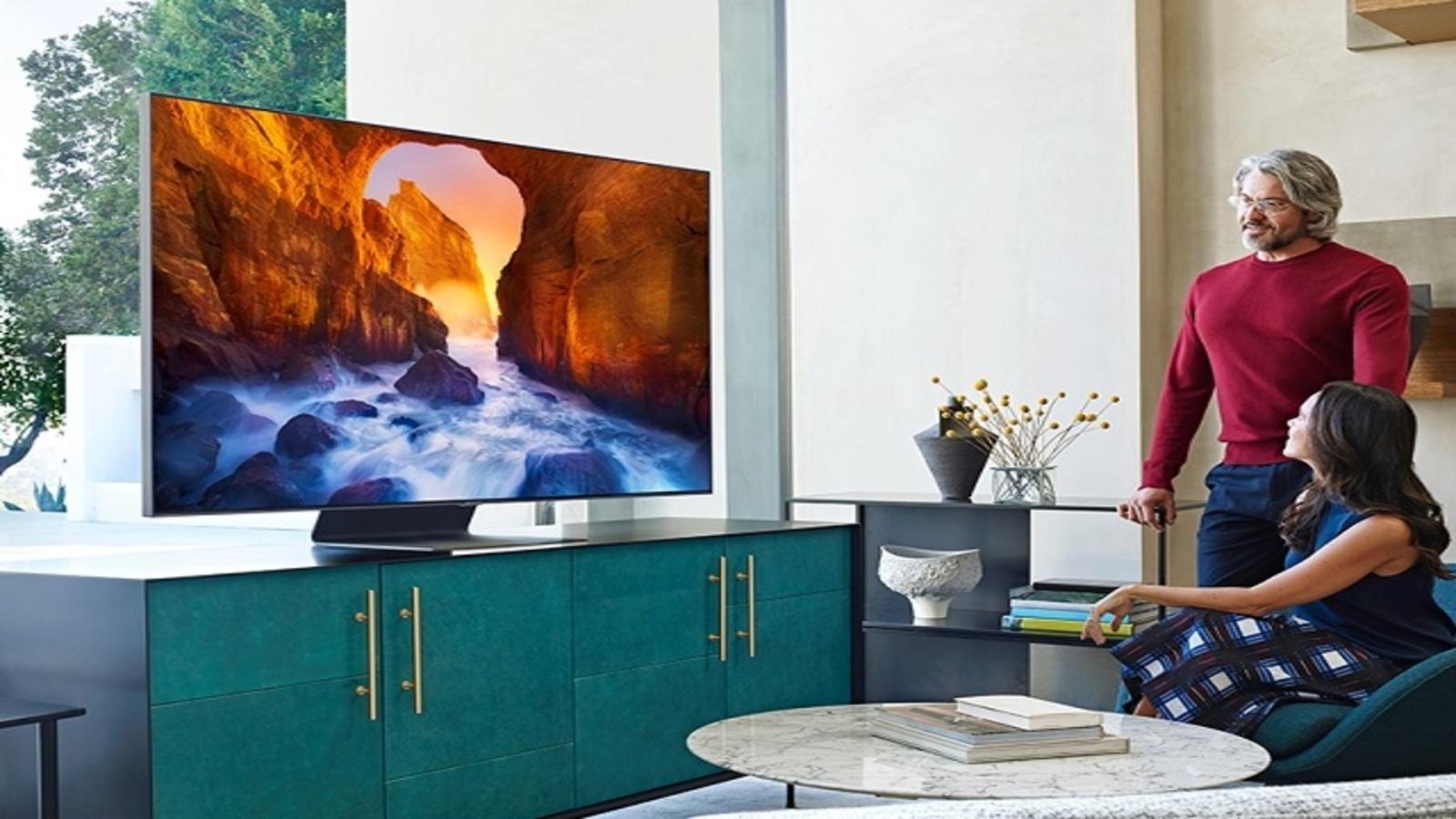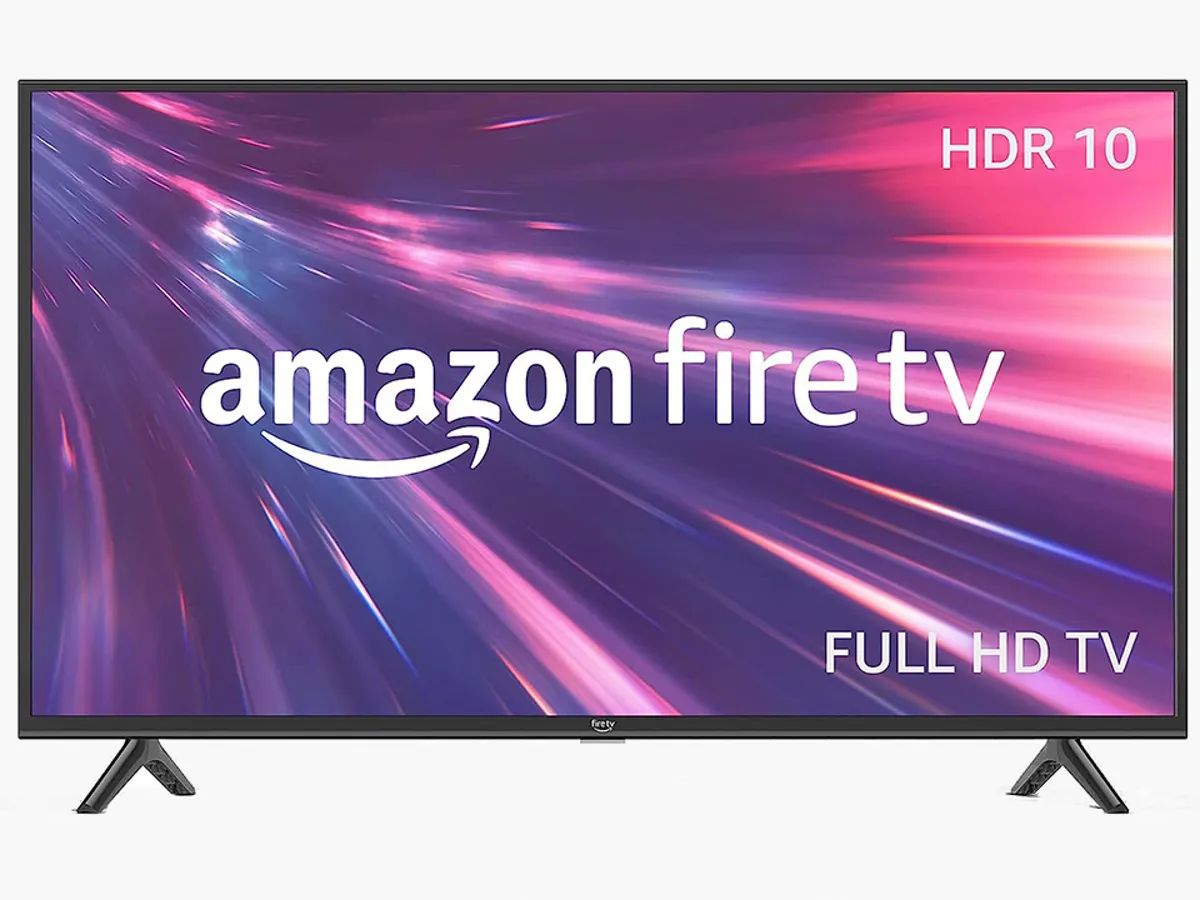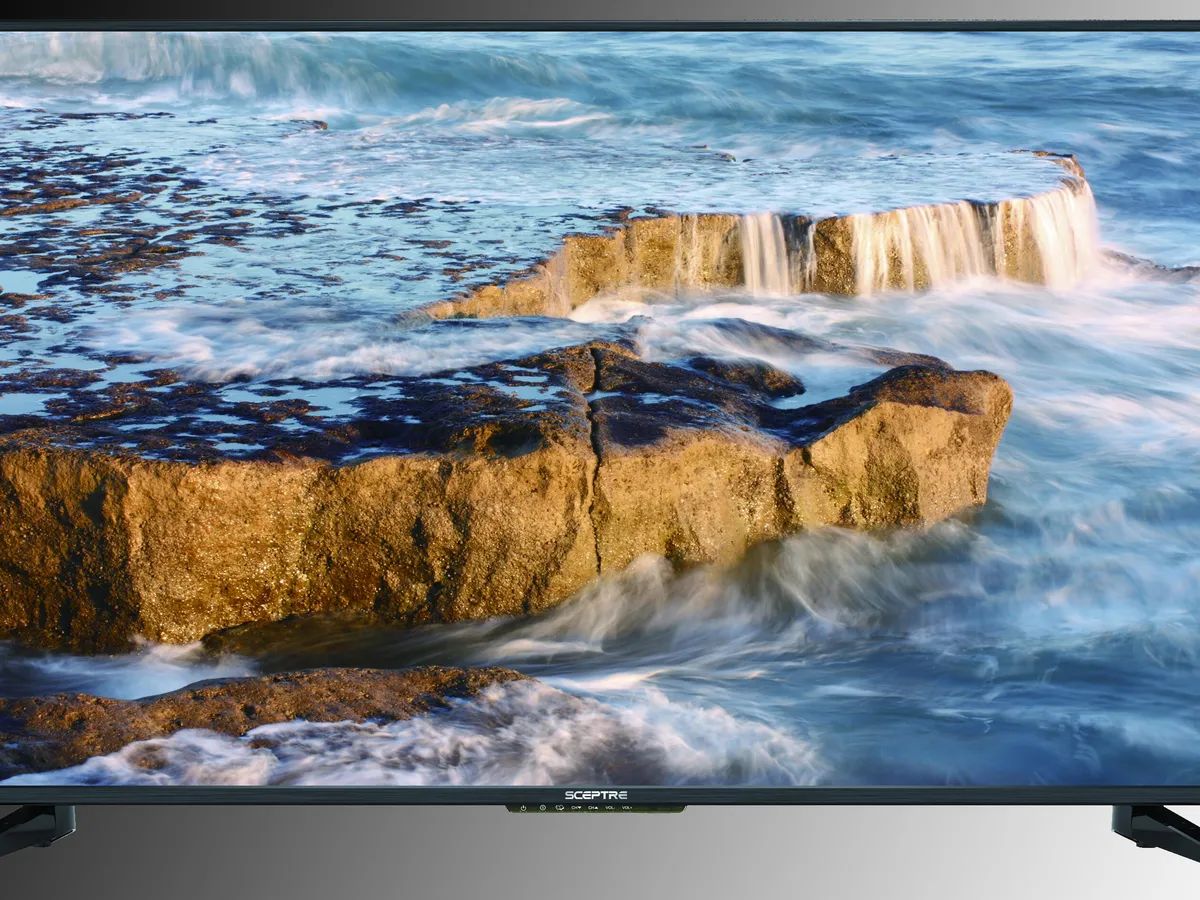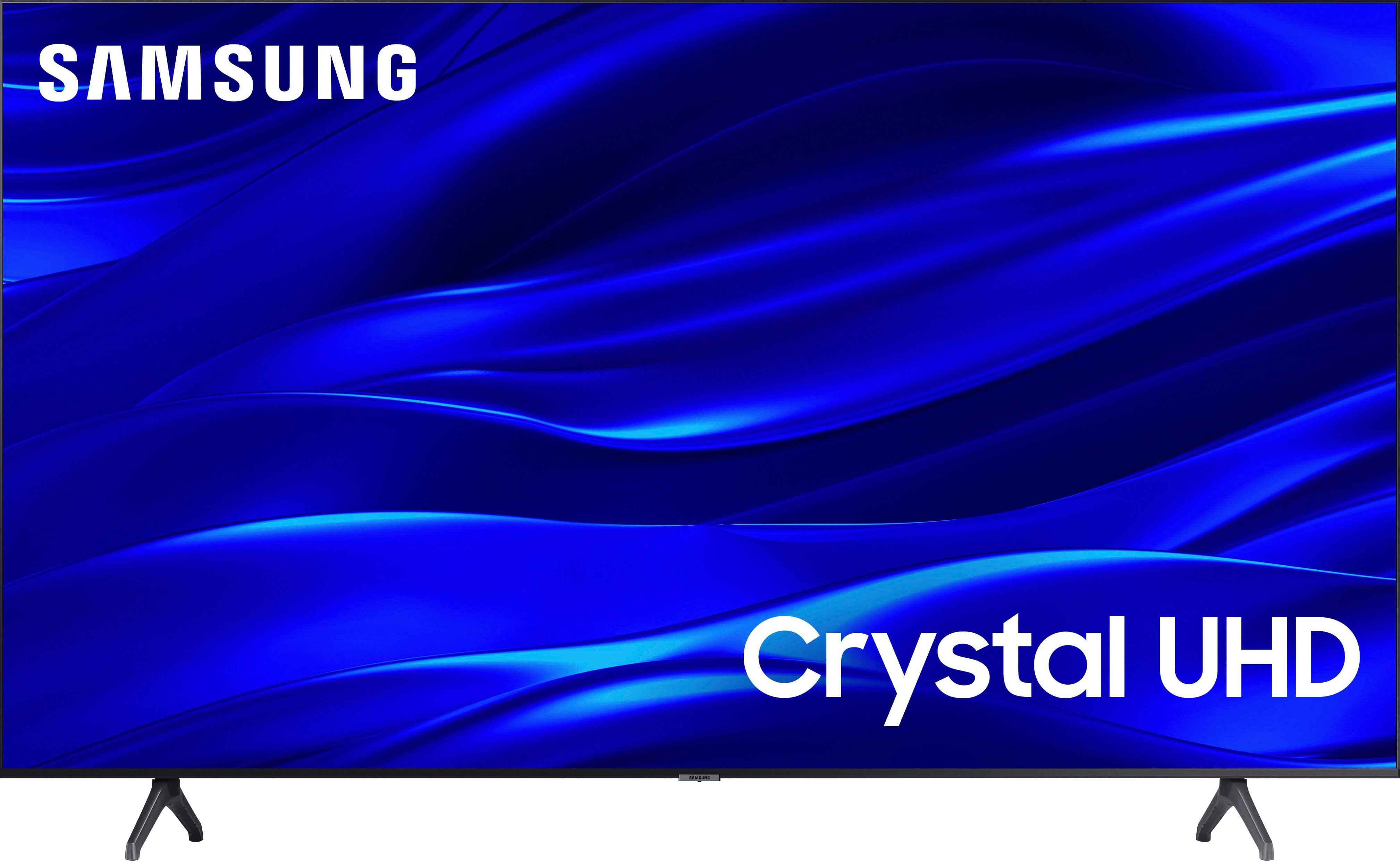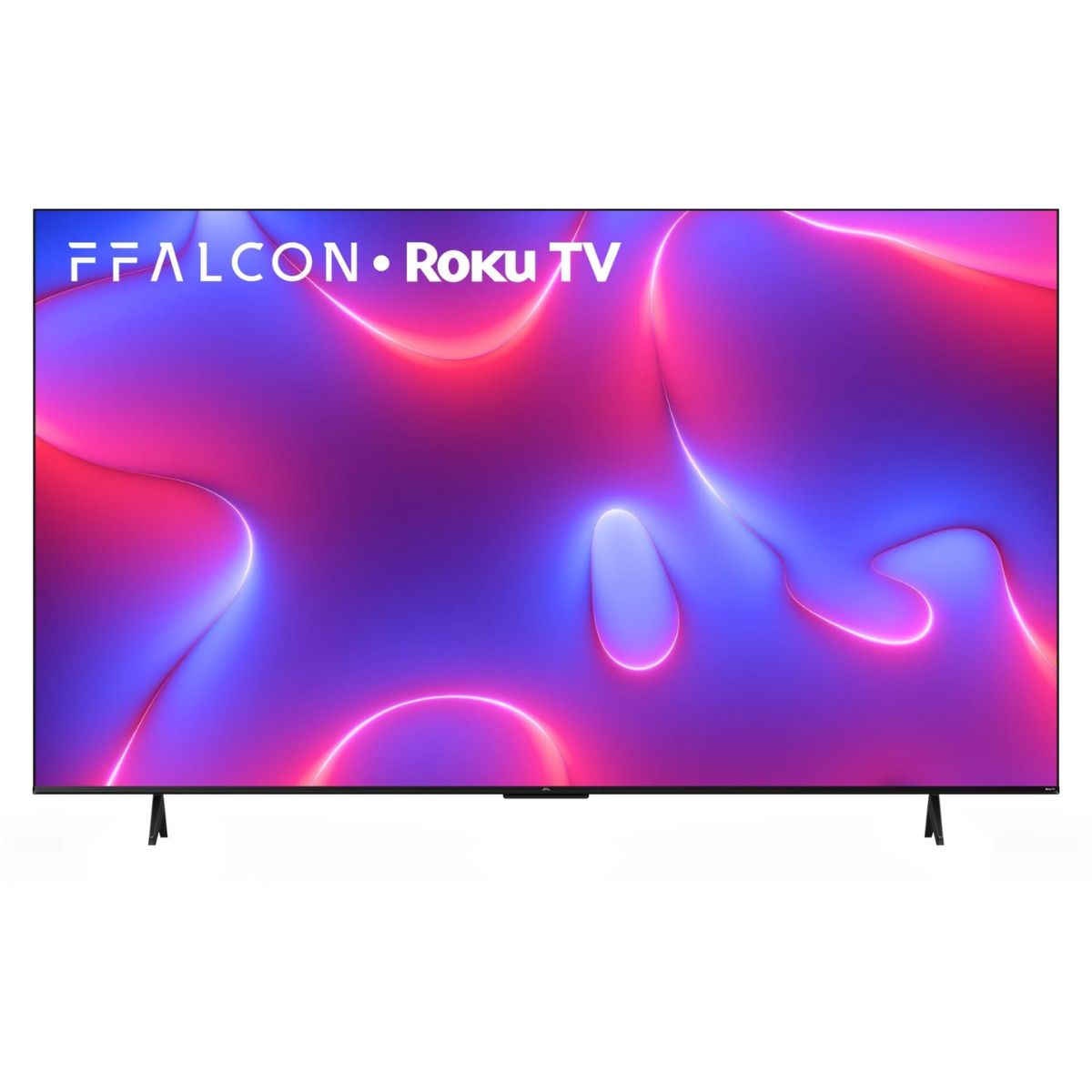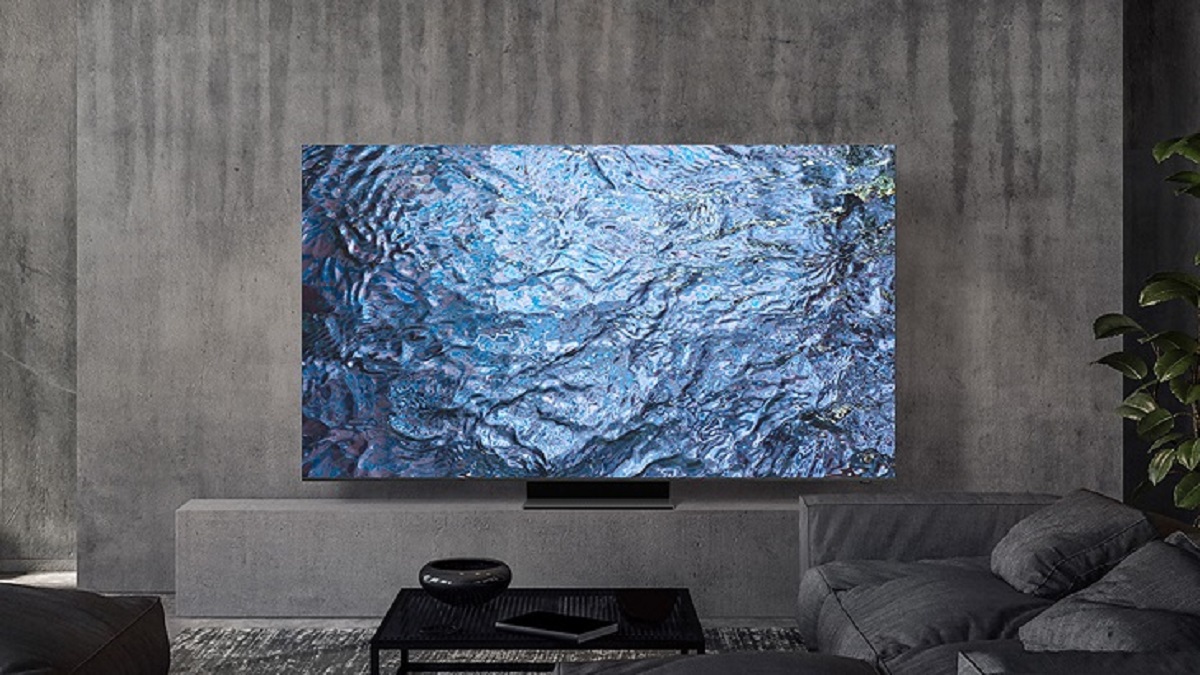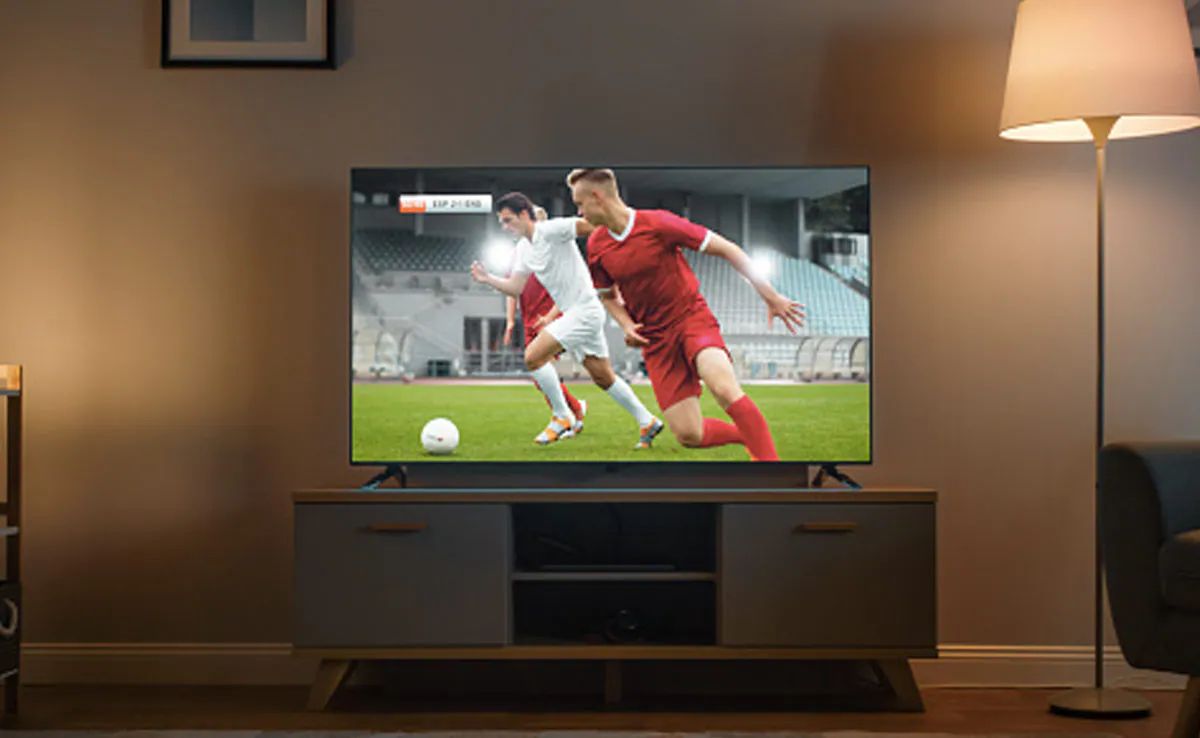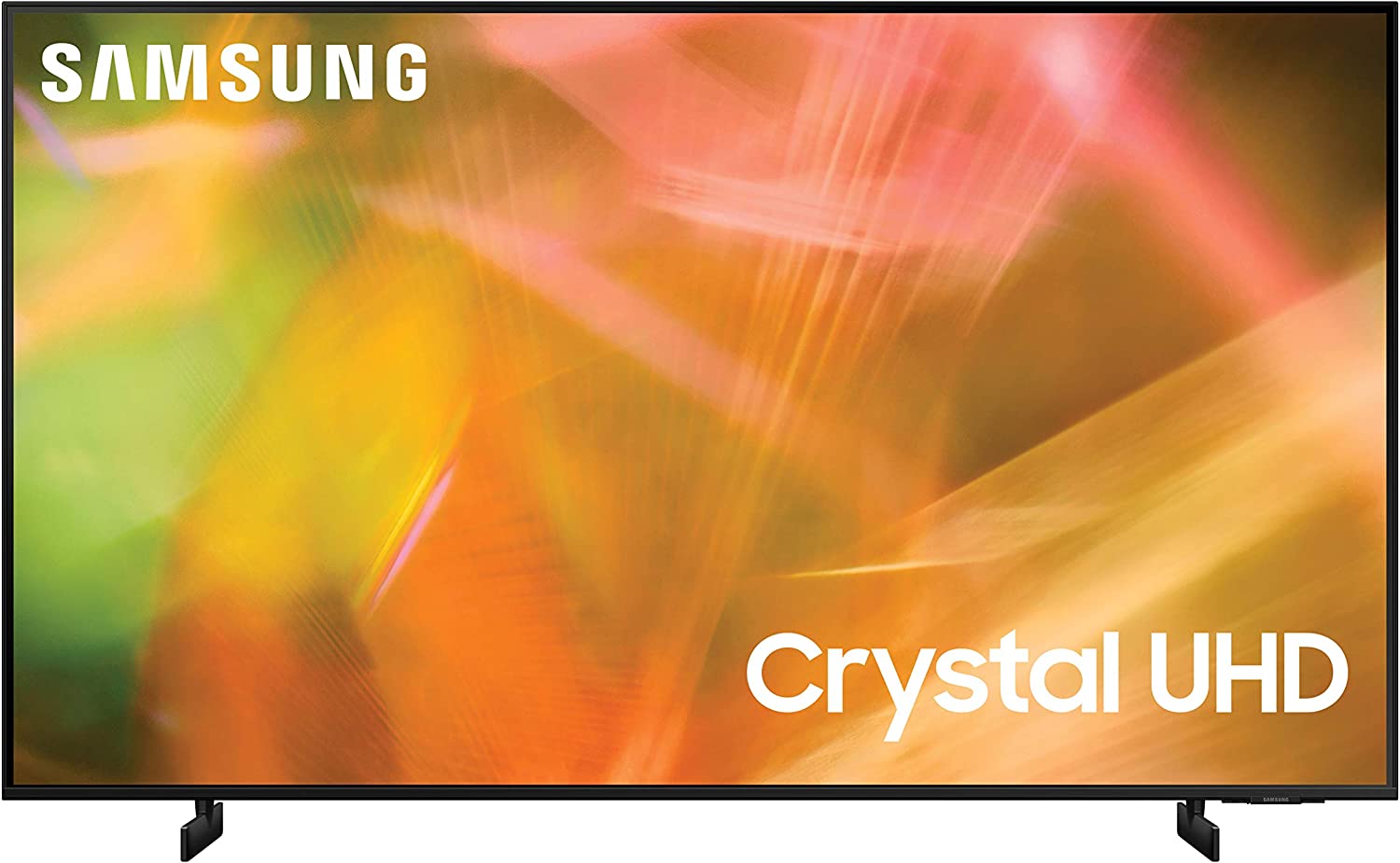Introduction
A 4K LED TV is a marvel of modern technology, delivering stunning picture quality and immersive entertainment experiences. With its high resolution display and vibrant colors, a 4K LED TV brings your favorite movies and shows to life like never before. But have you ever wondered what a 4K LED TV looks like when the screen is off? In this article, we will explore the design and components of a 4K LED TV that are visible even when the screen is not in use.
While the primary focus of a TV is its display, manufacturers pay attention to every detail of a 4K LED TV’s design. From the frame to the stand and the back panel, each element contributes to the overall aesthetics and functionality of the television. Even when the screen is off, a 4K LED TV can still be a visually appealing addition to your living space.
Understanding the various features and components of a 4K LED TV when the screen is off can help you make informed decisions when purchasing a new television. Additionally, knowing how to properly maintain and clean the TV screen can ensure its longevity and optimal performance.
In the following sections, we will delve into the anatomy of a 4K LED TV and explore the different design elements that contribute to its overall appearance when the screen is off. From the frame to the stand, and the inputs and outputs located on the back panel, we will guide you through what to expect from a 4K LED TV even when the screen is not displaying your favorite content.
The Anatomy of a 4K LED TV
Before we delve into what a 4K LED TV looks like with the screen off, let’s take a closer look at its overall design. A 4K LED TV consists of various components that work together to create the ultimate viewing experience.
The centerpiece of a 4K LED TV is, of course, the screen itself. The screen utilizes LED (light-emitting diode) technology to deliver high-quality images with enhanced brightness, contrast, and color accuracy. With a 4K resolution, which is four times the resolution of a Full HD TV, the screen is capable of displaying an incredible amount of detail.
Surrounding the screen, you will find the bezel or frame. This is the outer edge of the TV that borders the screen. Manufacturers often strive to minimize the bezel size to maximize the screen-to-body ratio, offering a more immersive viewing experience. The frame can be made of various materials, such as plastic, metal, or a combination of both, depending on the TV model and brand.
Beneath the screen, you will find the stand. The stand provides stability and support for the TV, allowing it to be placed on a flat surface. The stand may be fixed or adjustable, and its design can vary widely between TV models. Some stands are minimalist and blend seamlessly with the overall design, while others are more elaborate, featuring different finishes and shapes.
At the back of the TV, you will find the back panel. This is where the inputs and outputs are located, allowing you to connect external devices such as gaming consoles, Blu-ray players, or sound systems. The number and type of ports can vary from one TV model to another, but common options include HDMI (High-Definition Multimedia Interface), USB, Ethernet, and audio/video jacks.
Overall, the design of a 4K LED TV is crafted with both aesthetics and functionality in mind. Manufacturers strive to create visually appealing TVs that seamlessly blend into any living space while providing an optimal viewing experience.
Now that we have explored the components that make up a 4K LED TV, let’s take a closer look at what you can expect when the screen is off. From the frame to the stand and the back panel, each element contributes to the overall appearance of the TV and enhances its visual appeal even when it’s not displaying content.
The Screen-off Design of a 4K LED TV
When the screen of a 4K LED TV is off, the design elements surrounding it take center stage and contribute to the overall aesthetics of the television. These design features are carefully crafted to ensure that the TV remains visually appealing even when it is not displaying content.
One of the main design elements to consider is the frame or bezel surrounding the screen. The frame acts as a frame for the display, providing a boundary that enhances the visual focus on the screen itself. Manufacturers often choose sleek and slim frames to create a modern and minimalist look. Some TVs even feature ultra-thin bezels, also known as “edge-to-edge” designs, which maximize the screen size and offer a more immersive viewing experience.
The materials used for the frame can vary, with common options including plastic, metal, or a combination of both. The choice of materials can impact the overall look and feel of the TV. For example, a metal frame can give a more premium and luxurious appearance, while a plastic frame may offer more flexibility in terms of design options.
Next, let’s move to the stand. While the primary function of the stand is to provide stability and support for the TV, it also contributes to its overall aesthetics. Stand designs can range from simple and minimalist to more elaborate and unique styles. Some stands have a sleek and low-profile design that blends seamlessly with the TV, while others feature a more visually striking and eye-catching look.
Furthermore, the back panel of a 4K LED TV also plays a crucial role in its screen-off design. This is where the inputs and outputs are located, facilitating the connection of external devices. Manufacturers often strive to keep the back panel clean and organized, with neatly arranged ports that are easily accessible. This attention to detail ensures that the back of the TV remains visually appealing, even when viewed from different angles.
In summary, the screen-off design of a 4K LED TV focuses on the frame, stand, and back panel. The frame provides a visual frame for the screen, the stand supports the TV while adding to its overall aesthetics, and the back panel houses the necessary ports for external connections. By considering all of these design elements, manufacturers create TVs that offer a visually pleasing presence in any living space, whether the screen is on or off.
The Frame
The frame of a 4K LED TV is the outer edge that surrounds the screen, and it plays a significant role in the overall design and aesthetics of the television. The frame not only acts as a border for the screen but also enhances the visual focus on the display itself.
Manufacturers carefully consider the design and materials used for the frame to create a visually appealing and seamless look. Sleek and slim frames are often preferred, as they provide a modern and minimalist appearance. These frames help to minimize distractions and ensure that all attention is drawn to the vibrant display.
Frames can be made from various materials, including plastic, metal, or a combination of both. Each material has its own unique characteristics and can impact the overall look and feel of the TV. Metal frames, such as aluminum, can convey a more premium and sleek appearance. On the other hand, plastic frames offer more flexibility in terms of design options and can be molded into various shapes more easily.
Furthermore, some 4K LED TVs feature what is known as “edge-to-edge” or “borderless” designs. These TVs have extremely thin bezels, making the frames almost disappear when the screen is on. Edge-to-edge designs provide a more immersive viewing experience by maximizing the screen size and minimizing any distractions.
The color of the frame is also an important consideration. The frame color can be matched to the TV’s overall design aesthetics or to your room decor. Common choices include black, silver, and white frames, but manufacturers also experiment with other colors to add uniqueness and appeal.
Additionally, some high-end 4K LED TVs feature frames with premium finishes, such as brushed metal or textured surfaces. These finishes can give the TV a more luxurious and sophisticated look, elevating the overall design aesthetic.
Ultimately, the frame of a 4K LED TV not only contributes to its structural integrity but also enhances its visual appeal. Manufacturers carefully select materials, design elements, and colors to create frames that seamlessly blend with the overall design of the TV. Whether it’s a slim and simple frame or an edge-to-edge borderless design, the frame plays a crucial role in bringing the display to life and enhancing your viewing experience.
The Stand
The stand of a 4K LED TV serves as a vital component that not only provides stability and support but also contributes to the overall aesthetics and functionality of the television.
Manufacturers consider the design of the stand carefully, ensuring that it complements the overall look of the TV. The stand is designed to securely hold the TV in place on a flat surface, such as a TV stand or wall unit. It prevents wobbling or tipping, providing stability and peace of mind.
The design of TV stands can vary widely, ranging from minimalist and low-profile to more elaborate and decorative styles. Simple, sleek stands blend seamlessly with the TV, creating a clean and modern appearance. These types of stands are often preferred for a minimalist or contemporary living space, as they don’t draw attention away from the main attraction, which is the screen.
On the other hand, some TV stands are designed to be more visually striking and eye-catching. These stands may feature unique shapes, curves, or decorative elements that add a touch of elegance or personality to the TV. Elaborate stands can be an excellent choice for those who want to make a statement or add a focal point to their living room.
In addition to aesthetics, the stand also serves practical purposes. Some stands offer adjustable height or swivel functionality, allowing viewers to customize the viewing angle for a more comfortable experience. This is particularly useful when the TV is placed on a TV stand or furniture that may not be at eye level.
The choice of materials for TV stands can also vary. Common options include metal, wood, or a combination of both. Metal stands can provide a sleek and modern look, while wood stands can add warmth and a touch of traditional elegance to the TV. The choice of material often depends on personal preference and the overall decor of the room.
Overall, the stand of a 4K LED TV is more than just a practical support system. It plays a significant role in enhancing the overall aesthetics, as well as offering additional functionality. The design, materials, and style of the stand should be carefully considered to ensure a seamless integration with the TV and to create a visually pleasing presence in your living space.
The Back Panel
The back panel of a 4K LED TV is an important yet often overlooked component that is responsible for housing the inputs, outputs, and other connectivity options. While it may not be the most visible part of the TV, the design and functionality of the back panel are essential for seamless integration into your home entertainment setup.
The back panel serves as a hub for various ports and connectors, allowing you to connect external devices to the TV. Common ports found on the back panel include HDMI (High-Definition Multimedia Interface) ports, USB ports, Ethernet ports, audio/video jacks, and antenna/cable inputs. These ports provide the necessary connections for your gaming consoles, Blu-ray players, sound systems, streaming devices, and more.
To maintain a clean and organized appearance, manufacturers carefully design the layout of the ports on the back panel. Ports are typically arranged in a logical and accessible manner, making it easier to connect your devices without any hassle. Some TVs even feature cable management systems or routing options to keep the cables tidy and hidden from view.
The number and type of ports available on the back panel can vary depending on the TV model and brand. Higher-end models may offer more ports and advanced connectivity options, such as HDMI 2.1, which supports higher refresh rates and resolutions. It’s essential to consider your specific needs and the devices you intend to connect to the TV when evaluating the back panel’s capabilities.
In addition to the ports, the back panel also houses the TV’s power input and control buttons. The power input allows you to connect the TV to a power source, while the control buttons provide basic functions such as power on/off, volume control, and input selection.
Manufacturers strive to design the back panel in a way that minimizes cable clutter and allows for easy access to the ports. Some TVs even feature a removable back cover, providing a cleaner and more streamlined look. Additionally, ventilation holes are strategically placed on the back panel to allow for proper airflow and prevent overheating of the TV.
While the back panel may not be the most visually appealing aspect of a 4K LED TV, its design and functionality are crucial for a seamless and convenient user experience. The layout of ports, cable management options, and accessibility of controls contribute to the overall usability and integration of the TV into your entertainment setup.
Inputs and Outputs
The inputs and outputs of a 4K LED TV are located on the back panel and play a pivotal role in connecting external devices and expanding the functionality of the television. These ports allow you to extend the capabilities of your TV and enjoy a wide range of multimedia options.
One of the most common and essential ports found on a 4K LED TV is the HDMI (High-Definition Multimedia Interface) port. HDMI is the standard connection for transmitting high-quality audio and video signals between your TV and external devices. HDMI ports support various versions, with newer versions providing higher bandwidth and enhanced features like 4K resolution, HDR (High Dynamic Range), and audio return channel support.
Another commonly found port is the USB (Universal Serial Bus) port, which allows you to connect USB drives and external storage devices to your TV. This enables you to access and play media files such as photos, videos, and music directly on your TV. Some TVs also support recording TV programs to a connected USB drive.
Ethernet ports enable a wired internet connection, providing you with faster and more stable network connectivity. By connecting your TV to the internet, you can access various streaming services, browse the web, and even download software updates for your TV.
Audio and video jacks, such as headphone jacks and AV inputs, allow you to connect audio devices like headphones or external speakers, as well as legacy devices that use older analog audio/video connections.
In addition to these standard ports, some 4K LED TVs may include specialized ports and features. These can include optical audio outputs for connecting to soundbars or AV receivers, component inputs for older devices, and even built-in wireless capabilities like Wi-Fi and Bluetooth connectivity.
When choosing a 4K LED TV, it’s crucial to consider the specific inputs and outputs you require to accommodate your devices and entertainment needs. Assess which ports are necessary for your external devices, such as gaming consoles, Blu-ray players, sound systems, and streaming devices.
Furthermore, it is important to note the number and type of ports available on the TV, as this can impact the versatility and expandability of your home entertainment setup. Always check the specifications and compare the available ports against your connectivity requirements to ensure seamless integration and compatibility.
Overall, the inputs and outputs of a 4K LED TV provide the necessary connections for expanding the functionality of your TV and enjoying a diverse range of multimedia options. By considering your specific needs and the devices you intend to connect, you can choose a TV that offers the right combination of ports to enhance your viewing experience.
What to Expect When the Screen is Off
When the screen of a 4K LED TV is off, there are still several aspects to appreciate beyond the display itself. While the primary purpose of a TV is to showcase vibrant images and immersive content, manufacturers understand the importance of maintaining an attractive and visually appealing appearance even when the screen is not in use.
The frame surrounding the screen remains visible when the TV is turned off, offering a sleek and modern look to your living space. Manufacturers often opt for minimalistic and slim frames that accentuate the screen and minimize distractions. Some TVs even feature borderless designs or ultra-thin bezels, maximizing the screen real estate and providing a more immersive viewing experience.
The stand of a 4K LED TV also plays a role in its appearance when the screen is off. Whether it’s a minimalist stand that blends seamlessly with the overall design or a stand with unique and eye-catching aesthetics, it contributes to the overall visual appeal of the television. The stand provides stability and support, ensuring that the TV remains securely positioned.
Even the back panel, though typically concealed from view during regular use, contributes to the overall design. The clean and organized layout of ports and connectors, as well as cable management options, ensure a neat and clutter-free appearance. The back panel is also home to the TV’s power input and control buttons, offering functionality and accessibility.
Additionally, some 4K LED TVs incorporate ambient lighting or backlighting features. These features create a soft glow around the TV, enhancing the ambiance of the room even when the screen is off. Ambient lighting can be adjusted to match the room’s decor or create a specific mood, adding an element of sophistication and relaxation to your entertainment space.
Furthermore, manufacturers understand that the TV is often the centerpiece of a living room or entertainment area. They strive to design televisions that are visually pleasing and seamlessly blend into any decor. From the choice of materials used to the overall form factor, great attention to detail is given to ensure that the TV remains an attractive addition to your living space, even when it’s not in use.
Overall, when the screen of a 4K LED TV is turned off, you can expect a visually appealing presence in your living space. The frame, stand, and even the back panel contribute to the TV’s overall aesthetics and design, offering a modern and sophisticated look that complements your decor. The attention to detail and thoughtful design elements ensure that your TV remains a stylish and attractive feature, even when it’s not displaying your favorite content.
Tips for Maintaining and Cleaning the TV Screen
The screen of a 4K LED TV is the focal point of the television and requires proper care to maintain its pristine condition and ensure optimal performance. Here are some essential tips for maintaining and cleaning your TV screen:
- Avoid touching the screen: It’s crucial to avoid touching the screen with your hands or fingers. Fingerprints, smudges, and oils can leave marks and affect the picture quality. Instead, use a screen cleaning tool or microfiber cloth to clean the screen.
- Turn off the TV before cleaning: Always turn off the TV and unplug it from the power source before cleaning the screen. This prevents any potential damage and ensures your safety.
- Gently wipe the screen: Use a soft, lint-free microfiber cloth to gently wipe the screen. Avoid using rough or abrasive materials that could scratch the surface. Start at the top of the screen and work your way down, using light pressure.
- Avoid liquid cleaners: Avoid using harsh chemicals, alcohol, or ammonia-based cleaners on the screen as they can damage the protective coating and affect the clarity of the display. Instead, use a solution of distilled water and mild dish soap, or purchase a screen cleaning solution specifically designed for TVs.
- Don’t spray directly onto the screen: When using a cleaning solution, apply it to the cloth, not directly on the screen. Spraying liquid directly onto the screen can cause it to seep into the bezels and other components, potentially causing damage.
- Remove stubborn stains carefully: If you encounter stubborn stains or marks on the screen, dampen the cloth slightly with the cleaning solution and gently rub the affected area. Avoid applying excessive pressure or scrubbing vigorously.
- Dust the TV regularly: Dust can accumulate on the screen and affect the picture quality. Use a dry cloth or a soft brush to gently remove any dust or particles. Avoid using compressed air or blowers, as they can force dust into the TV’s internal components.
- Avoid excessive heat and sunlight: Extended exposure to direct sunlight or high temperatures can damage the screen and other components of the TV. Place the TV in a well-ventilated area away from direct sunlight and heat sources.
- Follow manufacturer’s instructions: Every TV model may have specific cleaning instructions provided by the manufacturer. Refer to the user manual or online resources for any specific guidelines or recommendations for cleaning your particular TV.
By following these tips, you can effectively maintain and clean your 4K LED TV screen, ensuring a clear and vibrant display for a superior viewing experience. Regular cleaning and proper maintenance will help prolong the lifespan of your TV and keep it looking its best.
Conclusion
A 4K LED TV is a technological marvel that offers stunning picture quality and immersive entertainment experiences. Even when the screen is off, the design elements of a 4K LED TV continue to impress.
The frame surrounding the screen enhances the overall aesthetics, with slim and sleek designs that minimize distractions and create a modern look. The stand provides stability and support while adding to the TV’s visual appeal, with options ranging from minimalist to more elaborate and eye-catching styles.
The back panel, although often hidden from view, houses the inputs and outputs that allow you to connect external devices and expand the functionality of your TV. Manufacturers pay attention to the layout of ports and connectors, ensuring easy access and maintaining a clean, organized appearance.
When the screen is off, a 4K LED TV remains a visually appealing presence in your living space. Whether it’s the frame, stand, or even the ambient lighting features, immense thought and detail go into creating a TV that seamlessly integrates into any environment.
To keep your TV in top condition, it’s essential to follow proper cleaning and maintenance practices. Avoid touching the screen, use gentle cleaning tools and solutions specifically designed for TV screens, and dust regularly to maintain clarity and performance.
In conclusion, a 4K LED TV is not only a remarkable display device but also a work of art in its own right. The frame, stand, back panel, and overall design contribute to its visual appeal, even when the screen is off. By taking proper care of your TV and appreciating the attention to detail put into its design, you can fully enjoy the immersive experience it provides.









